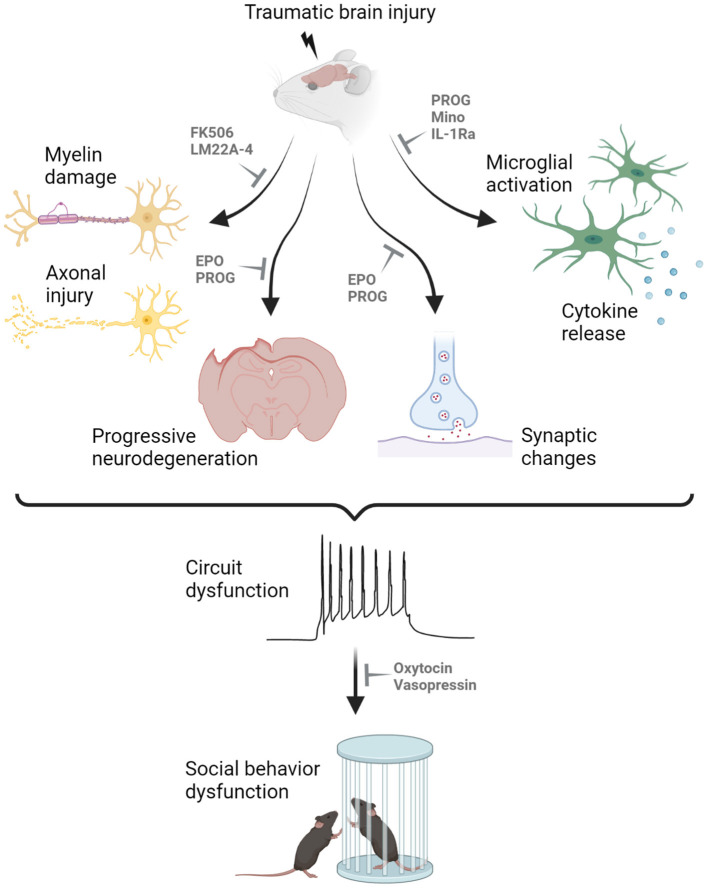Figure 1.
Proposed mechanisms underlying the manifestation of social behavior deficits after pediatric traumatic brain injury (TBI). Myelin damage, axonal injury, neurodegeneration, synaptic changes, microglial activation and cytokine release all contribute to the dysfunction of neuronal circuitry underlying social cognition, resulting in abnormal social interactions in rodent models of experimental TBI. Promising drug candidates to alleviated social behavior deficits are highlighted, targeting different secondary injury processes in the pediatric injured brain. For example, FK506 and LM22A-4 have been shown to reduce demyelination and axonal injury; progesterone (PROG) and erythropoietin (EPO) can prevent neurodegeneration and aberrant synaptic changes; and several compounds including PROG, minocycline (Mino) and interleukin-1 receptor antagonist (IL-1Ra) can minimize microglial activation and cytokine release. Such therapeutic targeting may reduce the extent of secondary injury after pediatric TBI to prevent the development of social behavior deficits. In contrast, treatments such as oxytocin and vasopressin may be administered once the abnormal circuitry is already present, to promote pro-social behaviors. Created with Biorender.com.

